How to Make a Subway Map with John Tauranac
Hear from an author and map designer who has been creating maps of the NYC subway, officially and unofficially, for over forty years!


Cobble Hill in northwestern Brooklyn is a small 40-block neighborhood known for its rowhouses and pristine architecture. Cobble Hill is also one of Brooklyn’s most expensive neighborhoods because of its historic architecture and its proximity to Downtown Brooklyn. Many buildings, including churches and homes, date back to pre-Civil War times, and the neighborhood played a major role in the American Revolution and the War of 1812. Residents have included Spike Lee, Norah Jones, and Martin Amis, as well as the mother of Winston Churchill. Here is our guide to the top 12 secrets of Cobble Hill!
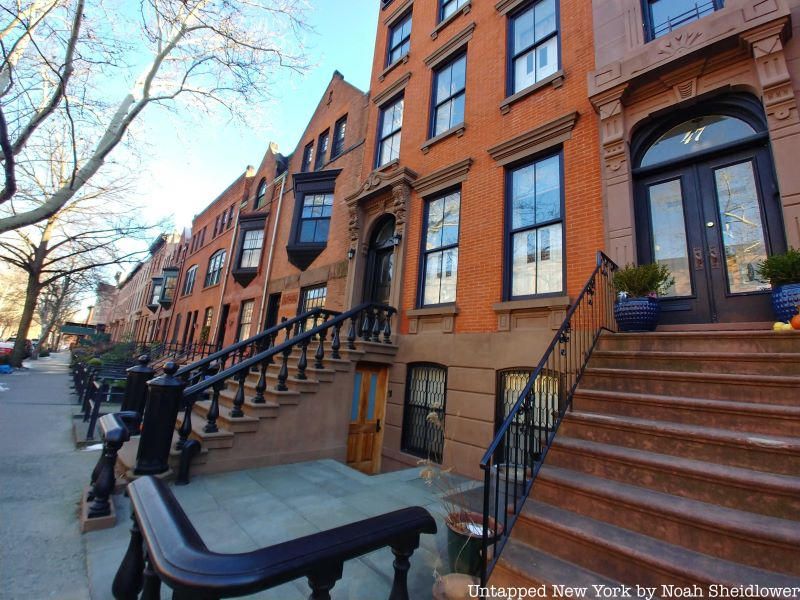
Cobble Hill was named after the hill “Cobleshill” or “Ponkiesbergh” around the intersection of Atlantic Avenue, Pacific Street, and Court Street. Originally settled by the Dutch in the 1640s, the hill and surrounding area were later converted into a strategic fort and planning post during the American Revolution. The spot where Trader Joe’s is situated was once the location of Cobble Hill Fort during the Battle of Brooklyn, serving as a significant lookout point. General Washington used it to view the battle at Gowanus Creek.
During the British occupation of the hill, forces cut off the top of the hill so that their Brooklyn Heights headquarters could not be seen from the top. The British also converted Philip Livingston’s nearby home into a naval hospital. After the Revolutionary War, the area lay rather dormant until the War of 1812, when the fort was occupied again and renamed Fort Smith. However, southern Brooklyn remained predominantly rural until the 1830s, when new streets and homes were constructed.
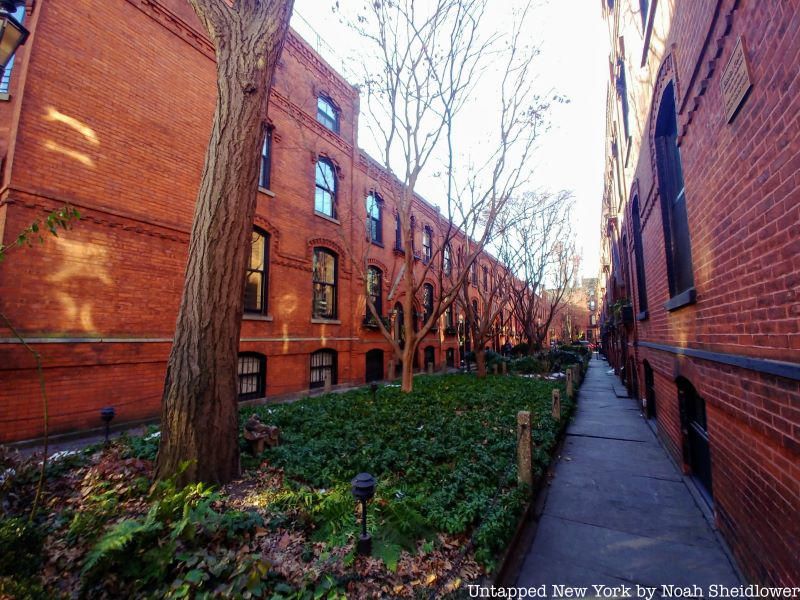
Alfred Tredway White was a philanthropist and “Brooklyn’s first citizen,” who developed buildings and housing communities throughout Brooklyn. In Cobble Hill, he built two experimental housing projects designed as affordable housing, although both now are among the most expensive developments in the neighborhood. The Romanesque revival Cobble Hill Towers on Hicks Street is a nine-building apartment complex built in 1879. The homes featured cross-ventilation, private courtyards, and exterior staircases. The towers have retained their reddish-brown exterior with detailed balconies.
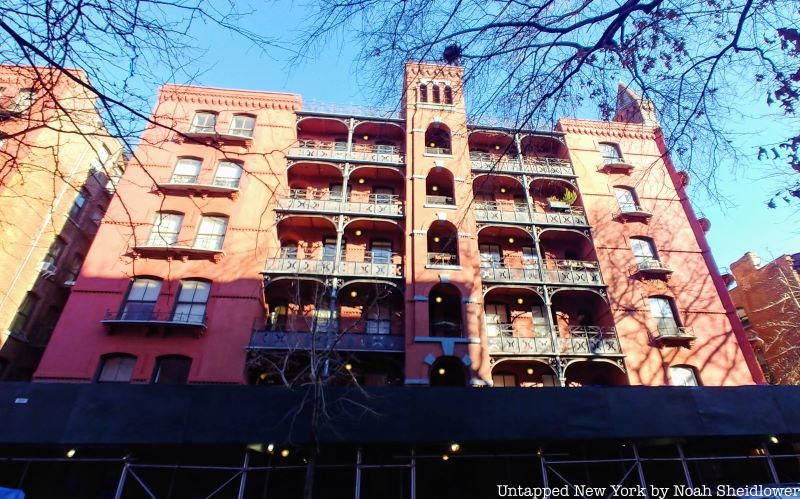
Perhaps the more sought-after project today was what White called the Workingman’s Cottages, now referred to as Warren Place. The one-block mews from Warren Street to Baltic Street consist of two rows of single-family homes built around a private courtyard. The gothic-style row houses were built in the late 1870s and are made of red brick with elaborate metal doors. The mews are valued at about $1.5-2 million today. Although built as affordable housing for Irish, Swedish, German, and Native American workers, the development is now oft-photographed and hidden.
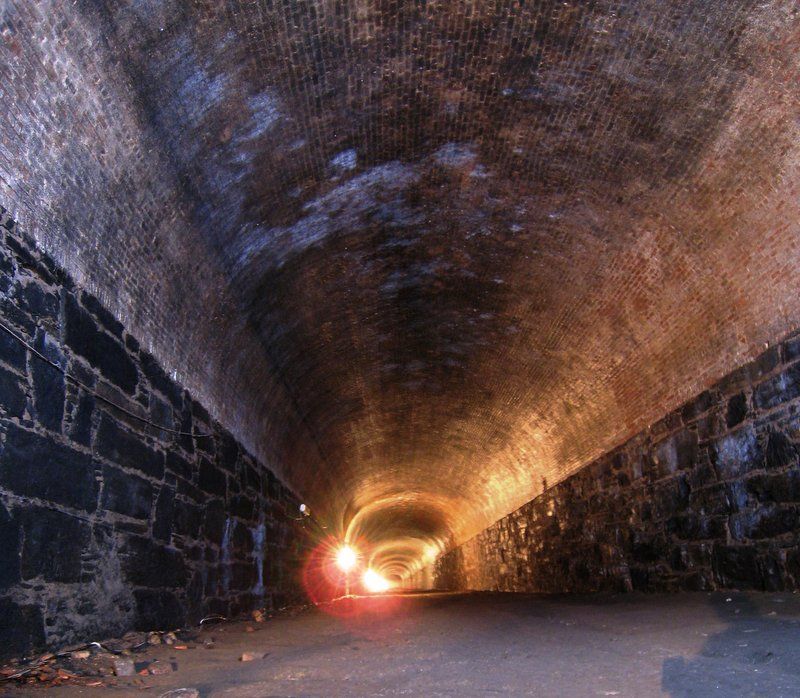
The Cobble Hill Tunnel was located under Atlantic Avenue and was built in 1844 as an alternative to the above-ground railroad tracks. Trains would transport goods to and from the waterfront during the 1840s, but the steep hill in the neighborhood often made these rides difficult with heavy cargo. The vaulted tunnel, made of brick, originally ran from the Ferry Terminal to Times Plaza. The tunnel shut down in 1861, though, once New York State banned railroad locomotives from the City of Brooklyn.
In 1980, about 120 years since the City of Brooklyn banned steam locomotives within city limits, Bob Diamond stumbled upon the hidden underground gem. From 1980, he gave tours of the half-mile span until his permit was taken away in 2010. According to the Verge, “He’d lug three plastic orange barricades out to the middle of Atlantic Avenue, pry off the manhole cover with a crowbar, and steady a thin ladder into the narrow shaft, the only entrance to the tunnel. Tourists would line up in the middle of the busy road, descending one by one into a tight passageway.”
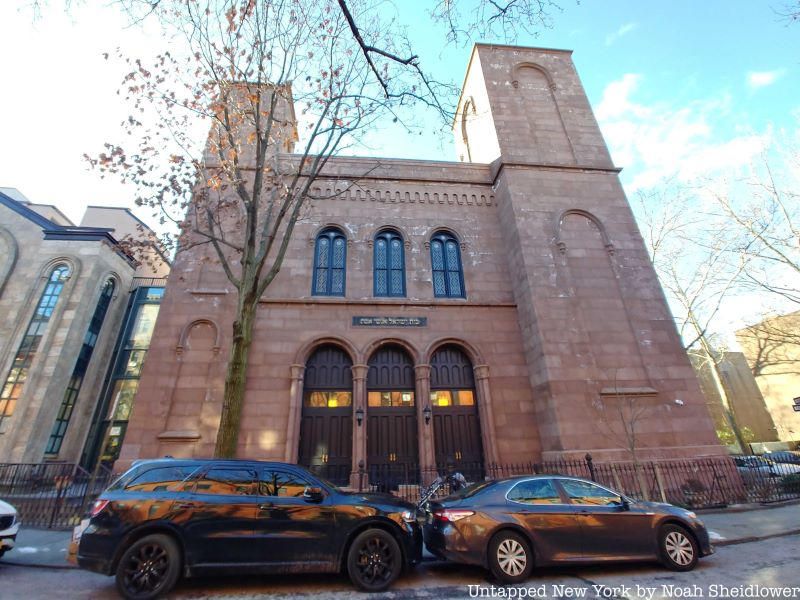
The Kane Street Synagogue, also known as Congregation Baith Israel Anshei Emes, has existed in its present location since 1905, although the congregation was founded in 1856. The Romanesque revival building was previously erected as the Middle Reformed Protestant Dutch Church in 1855. In 1862, after rabbi Aaron Wise split and created the Reform Congregation Beth Elohim, members of Baith Israel opened the first synagogue on Long Island in nearby Boerum Hill. After a number of failed mergers with nearby synagogues, the synagogue was met with financial hardship until the early 20th century with a successful merger and the acquisition of new property. Membership peaked in the 1920s, although the Great Depression led to a steady decline.
In 1913, famed composer Aaron Copland had his Bar Mitzvah at the synagogue, which was led by Copland’s father Harris. The family lived above H.M. Copland’s Department Store. Aaron’s brother Ralph also served as superintendent of the Sunday School. Rabbi Israel Goldfarb helped launch Copland’s musical career, making an agreement with Copland’s father that Aaron would study music for two or three years before switching to study law if that failed.
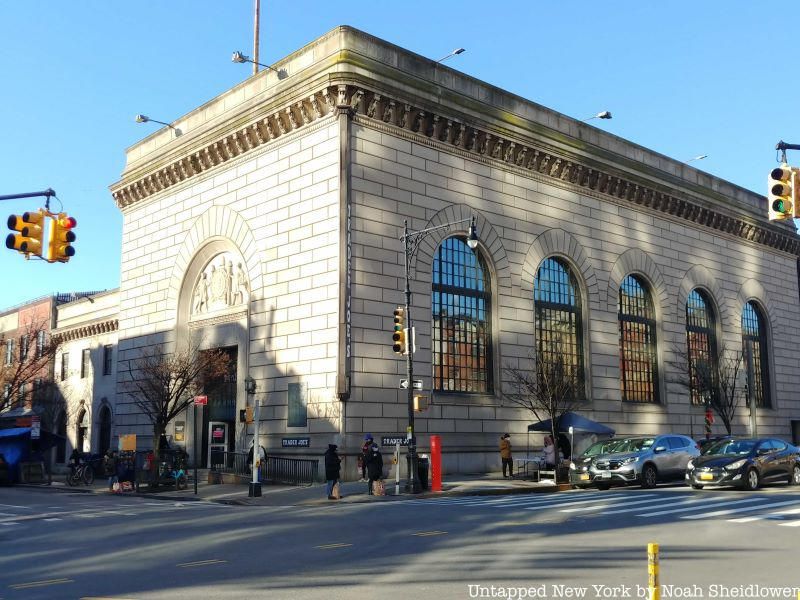
The Trader Joe’s at Court Street and Atlantic Avenue, which often has very long lines, is located in the historic South Brooklyn Savings Institution building. The Florentine Renaissance building was constructed in 1922 by McKenzie, Voorhees & Gmelin, who designed the New York Telephone Building and a number of buildings for the Chicago World’s Fair. A plaque on the building states, “Near this place during the Revolutionary War stood the Ponkiesberg Fortification, from which Gen. George Washington is said to have observed the fighting at Gowanus during the battle of Long Island, August 27, 1776.”
The bank operated in the building until 1975, when it changed its name to the Independence Savings Bank. The building’s exterior was limestone and featured 100 eagles on its cornice. The entire main floor of the building was originally the banking room. After Sovereign Bank purchased the Independence Savings Bank, Trader Joe’s moved into the property in 2008, leaving the exterior as it was.
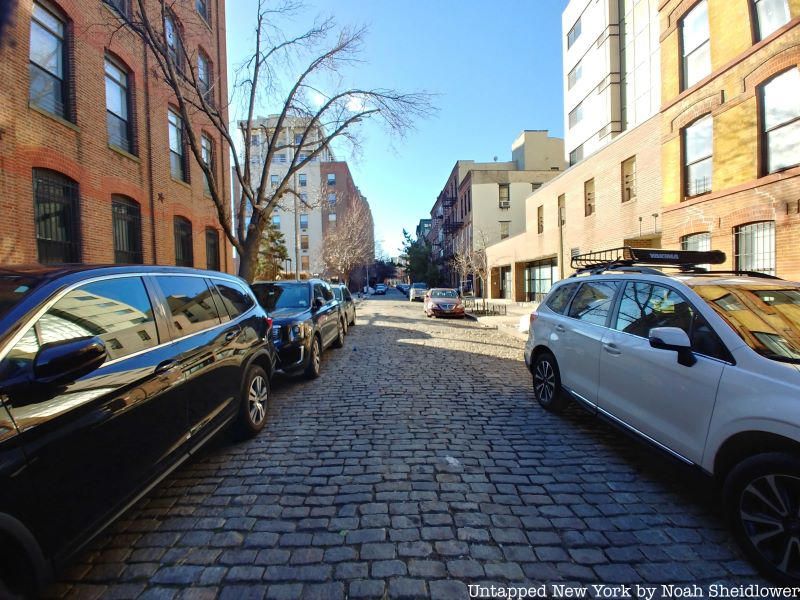
Tiffany Place is the only cobblestone street in Cobble Hill, despite what the neighborhood’s name would suggest. In the 1800s, cobblestone streets were quite common in the neighborhood, but they were slowly paved over, as they were in most of Brooklyn. It is one of a few one-block streets in Cobble Hill, in addition to Strong Place, Tompkins Place, and Cheever Place. Tiffany Place is not as connected to Cobble Hill as the rest of these “Places” since it is located on the other side of the BQE.
It has been suggested that Tiffany Place was actually named for glassmaker Louis Comfort Tiffany or his father, who some suggested had a factory at 1 Tiffany Place. However, this has been debunked since Tiffany Place was first mentioned by name in 1847 before Louis Comfort Tiffany was born. Tiffany Place may have been named after his ancestors, a few of whom played major roles in state and local politics, but nobody is quite sure which Tiffany was the namesake.
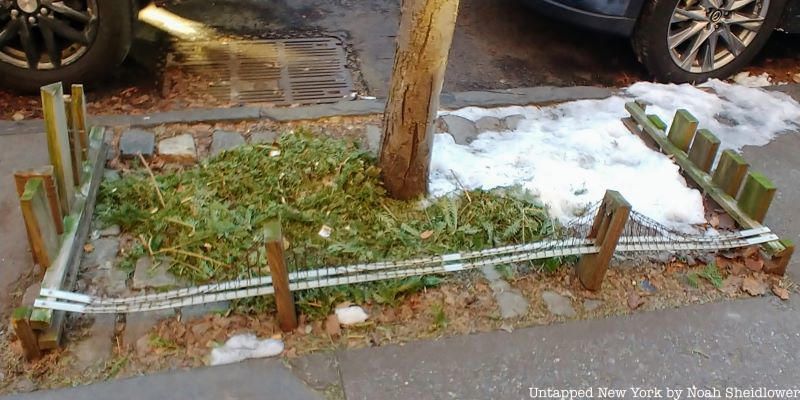
A wooden miniature Brooklyn Bridge is an unexpected addition to a Cobble Hill sidewalk, but it’s been there for years. The bridge is on Clinton Street, between Warren Street and Verandah Place. According to the New York Post, fourth-grade teacher Lisa Dewhurst built a miniature wooden Brooklyn Bridge for her father, Ted Kaufman, who lives on Clinton Street between Warren Street and Verandah Place.
The bridge features all the components: two wooden slabs represent the towers, two thin wooden planks make up the lanes, string serves as suspender cables, and tall wooden slabs look like buildings in the background.
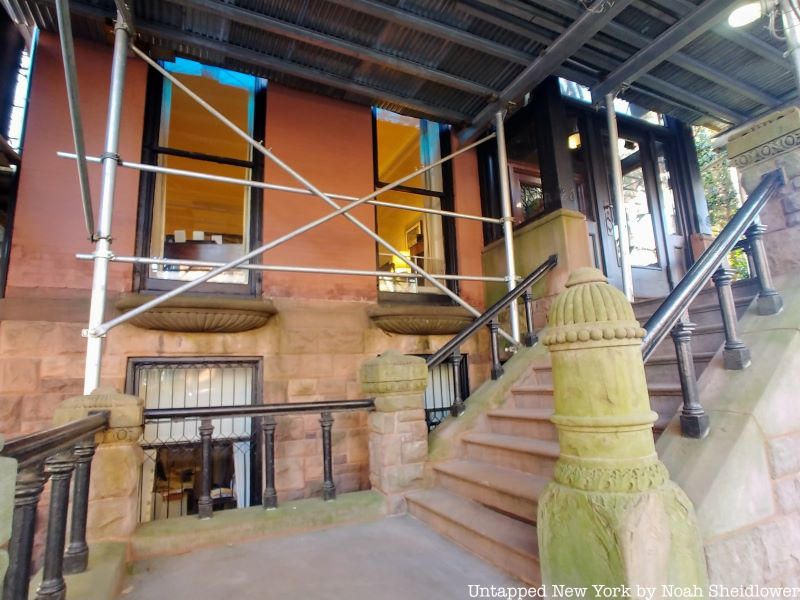
The DeGraw Mansion, located at 219 Clinton Street, was built in 1845, with a tower added in 1891 to see the harbor. It was built for Abraham J. S. DeGraw, a wealthy Manhattan commission merchant who lived with his merchant father John DeGraw. The redesign occurred under the wealthy Laura E. and Ralph L. Cutter, the home’s second owners, who hailed from New England. The Cutters added an extra story to the building as well as stepped gables on the roof. The Greek Revival home has Romanesque Revival and Neo-Flemish additions and was landmarked in 1969.
Perhaps the most significant feature of the home was its elevator in the tower, the first electric passenger elevator in a private home in Brooklyn. New York City played a major role in elevator history: Elisha Otis showcased his safety elevator design at the New York exposition in the Crystal Palace, and the first such elevator was installed in 1857 at 488 Broadway. The Equitable Life Building likely was the first office building with an elevator, installed in 1870. Although the DeGraw Mansion’s elevator is not as famed, it is still a significant architectural feature in one of Cobble Hill’s prized buildings.
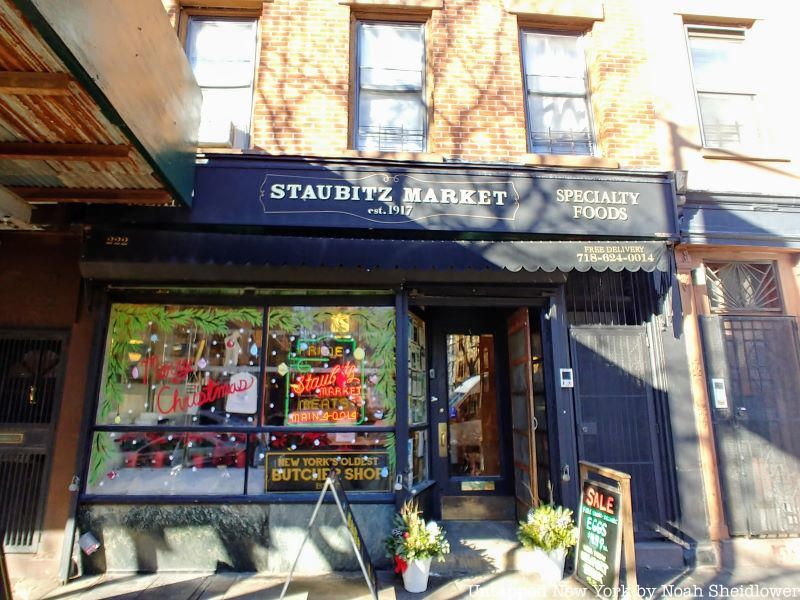
Staubitz Market is a butcher store that opened in 1917. It is arguably the oldest butcher shop in New York (and its website claims it is). Staubitz is located at the intersection of Court and Warren Street in Cobble Hill. Established by John Staubitz, the shop has been in the McFadden family for over 50 years, maintaining “the old-fashioned warmth of sawdust-strewn floors as well as many other original features from the turn of the century.”
Since the butcher’s start, every piece of meat was hand-selected and trimmed by hand using tools that have been passed on through the generations. Specialty items have included exotic meats and wild game, and many original features have been preserved, including the screen door, ornamented tin ceiling, and antique cashier booths. In addition to a butchery, Staubitz also functions as a charcuterie, fromagerie, and pantry, offering oils and pasta in addition to over 50 cheeses.
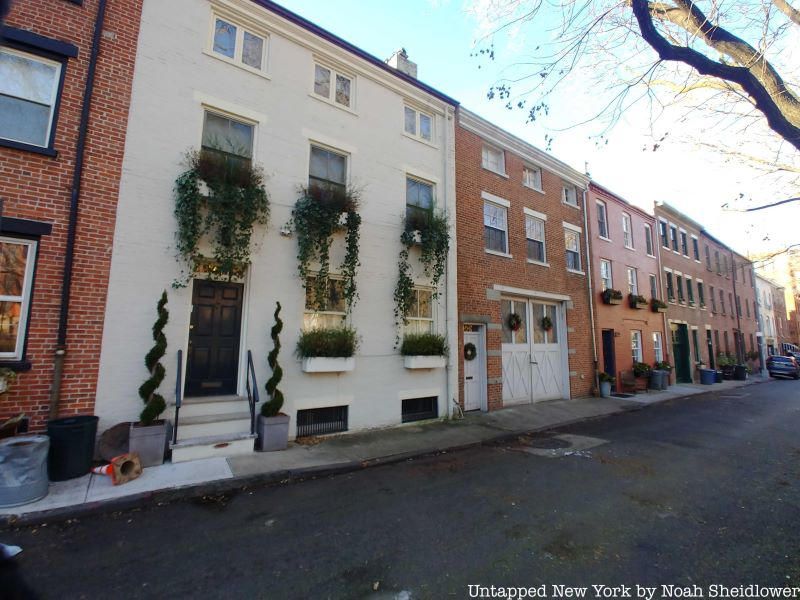
Verandah Place in the Cobble Hill Historic District is a tiny street that transports visitors back to the neighborhood’s origins. The street’s short and quaint rowhouses are located next to Cobble Hill Park, created in the 1960s. Two mansions were on the park’s land, and after they were torn down, community members planned to build a supermarket in their place. Verandah Place is more a mews for horse-drawn carriages of Brooklyn’s past than a proper street, measuring just 20 feet wide.
It was created as a service alley during the neighborhood’s pre-Civil War development. Located between Henry and Clinton streets, the street’s south side is lined with picturesque small brick residences built up to the sidewalk, some originally built as stables and later converted to residential use. Some were built as homes for local workers. Ironically, there are no verandahs to be found on this street.
The quaint and historic street, though, did not always have such a charming reputation. By the early 20th century, Verandah Place was known, according to the Brooklyn Standard-Union, as “the worst spot in the entire precinct, and that is saying a great deal.” Those on the north side of the street constructed a 15-foot tall brick wall, which remained for years.
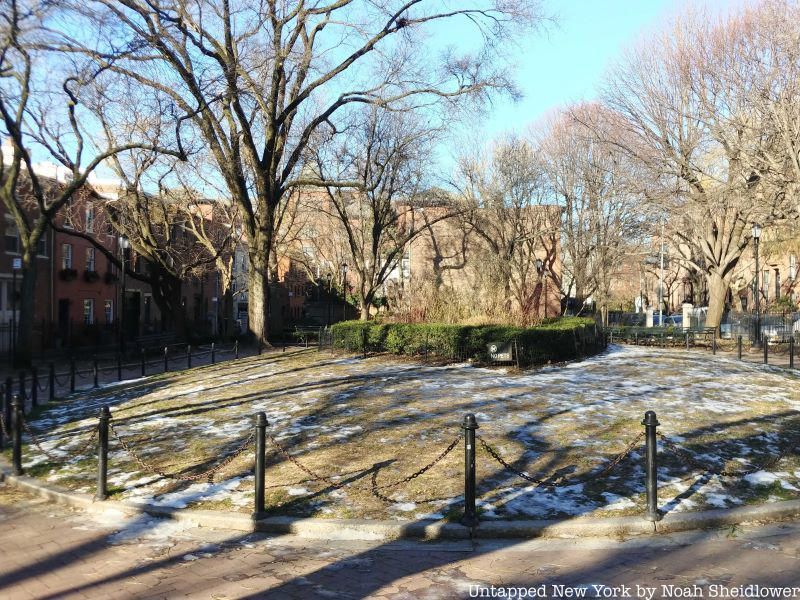
Today, Cobble Hill is home to a handful of churches, including one of the oldest Roman Catholic Churches in New York State, Saint Paul’s Church. However, one of the most well-known in the neighborhood was the Second Unitarian Church, built in 1857 and destroyed in 1962. The church was located on Clinton Street, often nicknamed the “highway of churches” due to the high prevalence of different denominations of churches. One of its parishioners, Mary White Ovington, co-founded the National Association for the Advancement of Colored People (NAACP), and the church was also a major abolitionist center in Brooklyn.
The church, though, had the rather strange nickname “Church of the Holy Turtle.” This was because the building was shaped like a cruciform, with a low-pitched roof of green and purple octagonal slates resembling a tortoise. This was not the church’s official name, but the church’s quirky architecture made it a neighborhood staple. The church was active during the time when Cobble Hill also had many convents, many on Clinton Street as well as Baltic Street. Nuns from across the country and Europe came to Cobble Hill and lived among the neighborhood’s workingmen and elite.
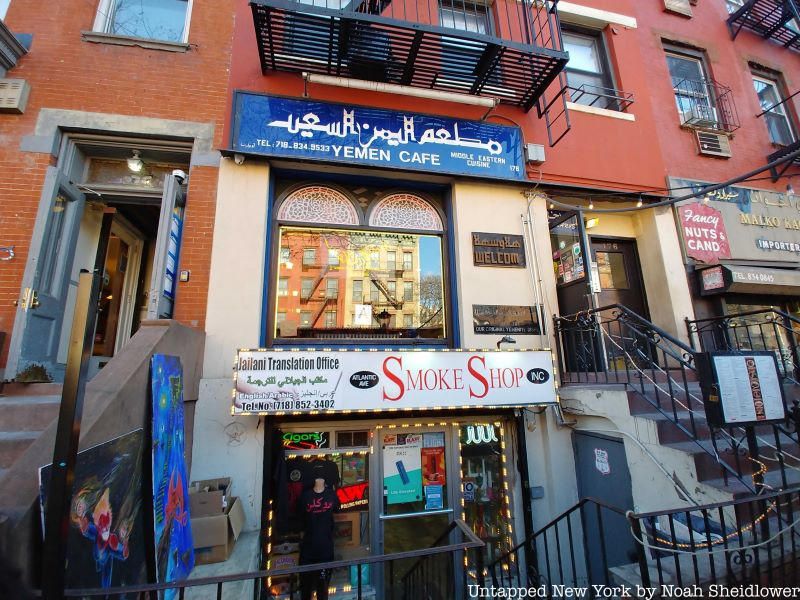
On the border of Cobble Hill and Downtown Brooklyn, mainly along Atlantic Avenue, are many Middle Eastern shops and restaurants that pull in people from across the city. With another location in Bay Ridge, Yemen Cafe is a neighborhood favorite, serving up Yemeni staples including a stew called saltah and chicken haneeth. Next door is Hadramout Restaurant, named after a region of eastern Yemen, which serves dishes like lamb ghallaba, fahsa fish, and fassoulia. There is also a new coffee shop named Diwan serving traditional Yemeni drinks and snacks.
Middle Eastern shops near these three eateries include Oriental Pastry & Grocery and Malko Karkanni Bros, offering all sorts of Middle Eastern food and goods. Across the street, Damascus Bread and Bakery Shop serves up fresh Syrian breads and pastries, including spinach pie, kibbeh, walnut baklava, and guraiba. A few doors down is Sahadi’s, a popular Middle Eastern grocery.
Next, check out the Top 10 Secrets of Carroll Gardens!
Subscribe to our newsletter